The Orange Four is an interesting beast. Originally dropped into the mountain bike market about this time last year, the Four slotted quite nicely into the Orange Bikes lineup somewhere between the existing Segment 29er and the Five. As Orange will attest, there was no master plan behind the Four’s development. It simply boiled down to the fact that the Five had been growing legs over the years, getting bigger and burlier along the way. While the Five has remained as the most popular option in the Orange Bikes lineup, the crew behind the Halifax-based manufacturer realised that there was a bit of a gap opening up. A gap that could be filled by something with a little less travel the Five, but a little more than the Segement.
And, in a nutshell, that’s exactly what the Four became; a kind of a lighter and tighter version of the Five.

We first swung our limbs over the top of a Four last year where we delivered you a First Ride Review and video about the (then) brand new bike from Orange. Funnily enough though, we’ve not had an opportunity to revisit the Four since then.
In speaking with Orange, it seems that while the Four has been winning loads of praise from within and outside of the company, the stunning popularity of the Five has somewhat overshadowed its baby brother. And that’s a shame, because the Four possesses all the right ingredients to make it quite possibly, the ideal bike for British trail riders.
So to find out whether that is indeed the case, we’ve got one in for a proper longterm test to see how it stacks up against the Five we recently reviewed, and the Stage 5 we also have on test at the moment.

“The Four has been coming for a while now. Not on our future model list, not as part of the grand Orange plan, but from deep within our hearts. It started with one of those ‘what if…” conversations where we all found ourselves on the same page. Has the 15 year evolution of the Five left a bike sized gap behind it? Maybe. We swept clean the drawing board and sharpened a pencil” – From Orange Bikes.
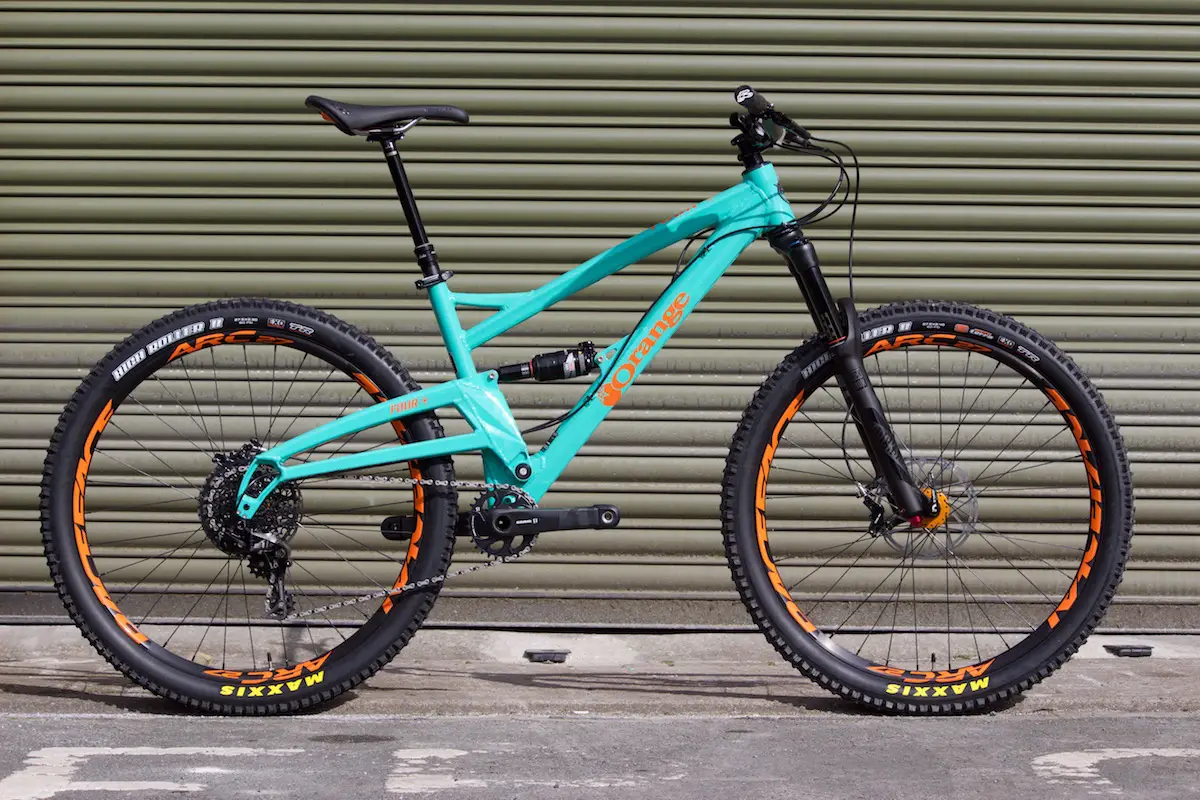
Orange Four Features
- Full suspension trail bike
- Made in Britain
- 6061-T6 aluminum monocoque frame
- 27.5in wheels
- 120mm rear travel
- Single pivot suspension design
- Designed for 130mm travel forks
- 67° head angle
- 73mm English threaded bottom bracket
- ISCG 05 chainguide tabs
- Boost 148x12mm rear hub spacing
- 424mm chainstay length
- Internal routing for brake, gear and dropper post cabling
- Available sizes: Small, Medium, Large, X-Large
- Frame RRP: From £1650
- Complete bike RRP: From £4530 (as shown)
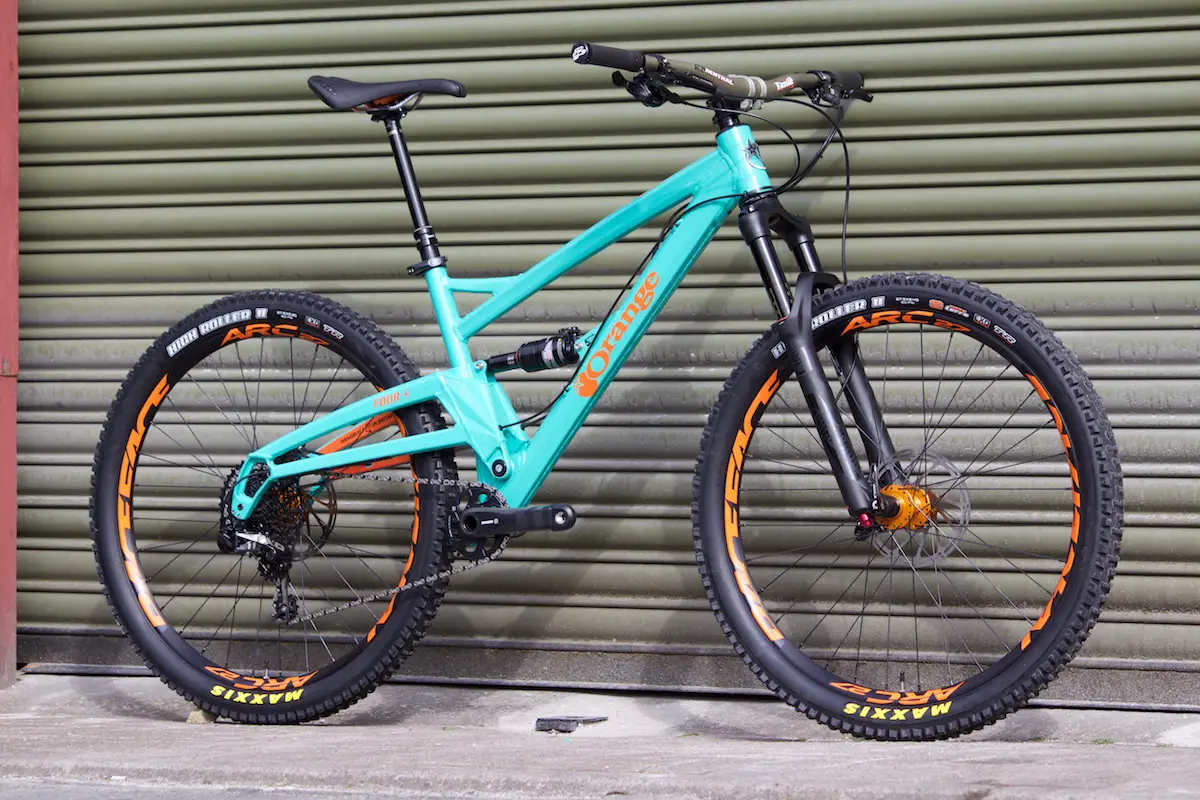
Just like the latest Five, the Orange Four is built around 27.5in wheels and features a monocoque alloy frame that’s fabricated right here in the UK. The suspension design is the classic Orange single pivot arrangement, with two bearings and an axle joining the swingarm to the mainframe. Rear travel sits at 120mm, so 20mm shorter than the Five.
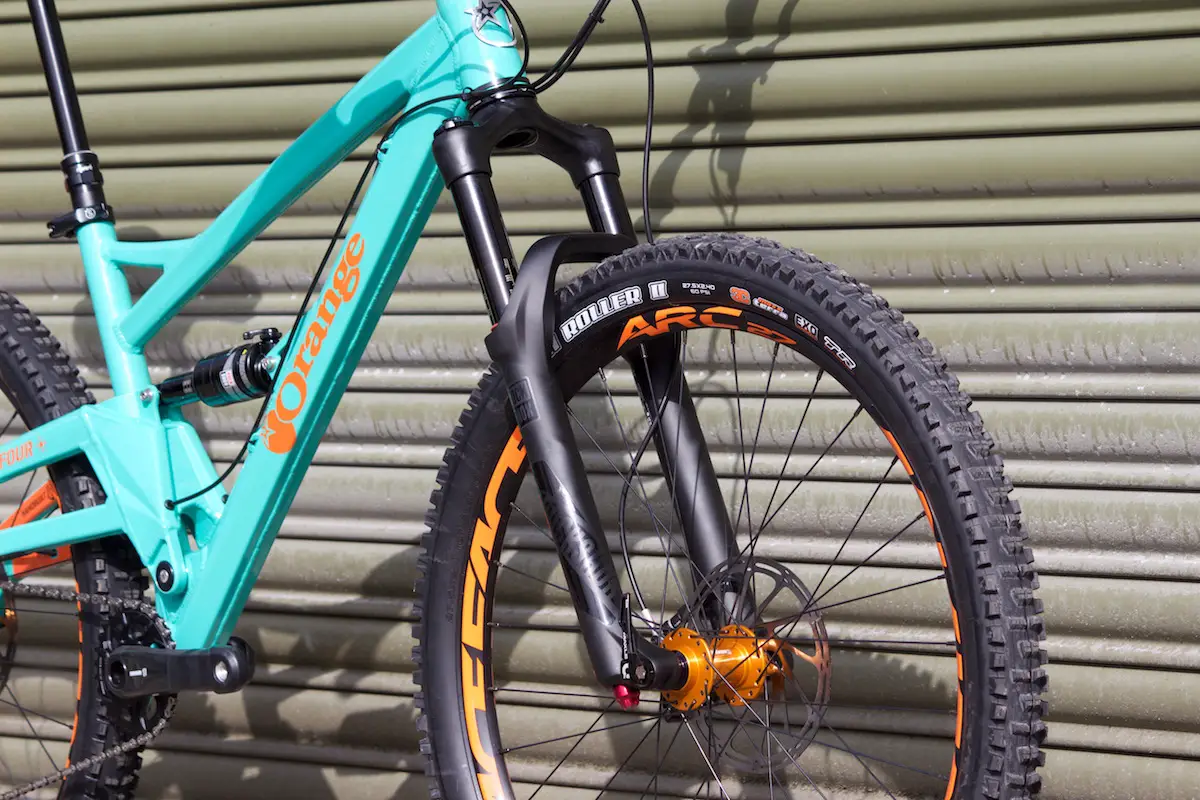
Up front is a 130mm travel fork. On the Four RS build that we’re testing, it’s a burly Pike RCT3 from RockShox, complete with 35mm diameter stanchions and Boost 110x15mm hub spacing. Inside is a Solo Air spring and aCharger damper that provides independently adjustable rebound and low-speed compression damping.
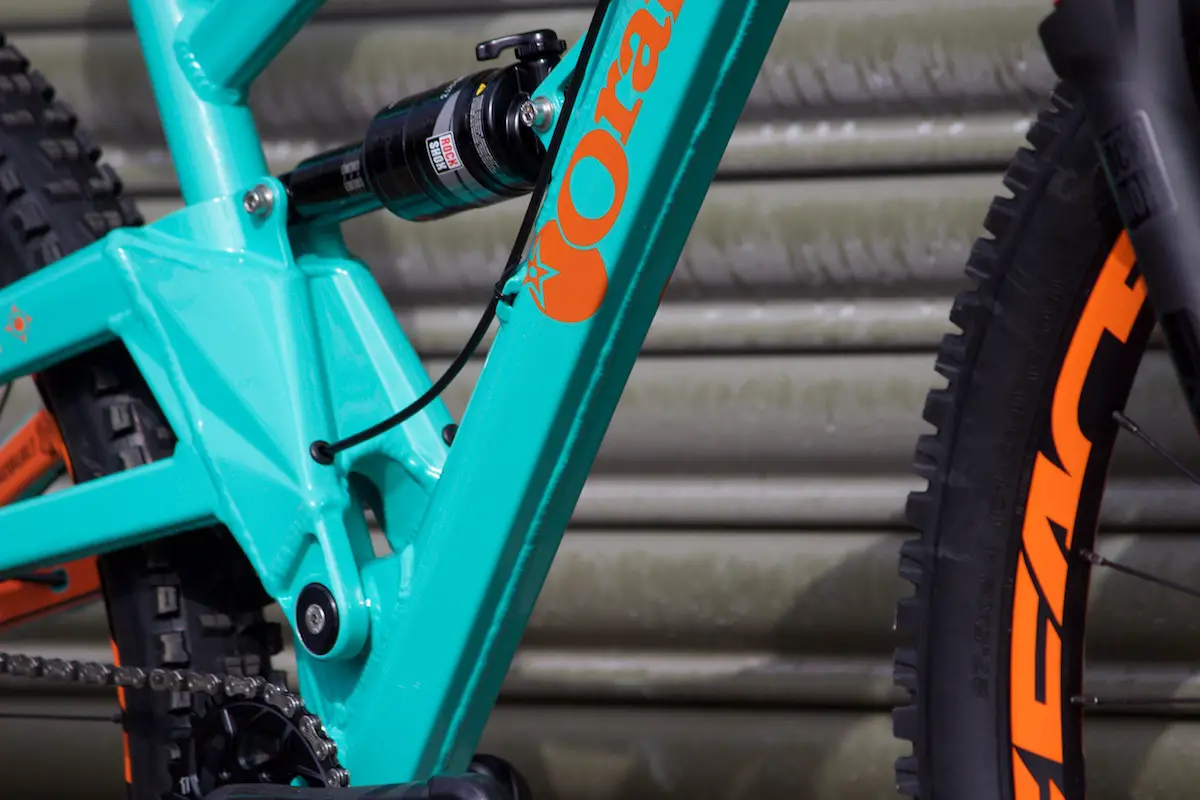
Moving across the frame, you’ll notice a long welded seam running along the underside of the downtube. With the exception of the seat tube and bottom bracket shell, Orange builds its frames using a monocoque construction, where elements such as the downtube begins its life as a piece of flat alloy that is then folded over, before being welded to create a hollow structure. In reality, it’s quite a bit more complicated than that, and the close you look at this frame, the more that complicated detail will make itself apparent.
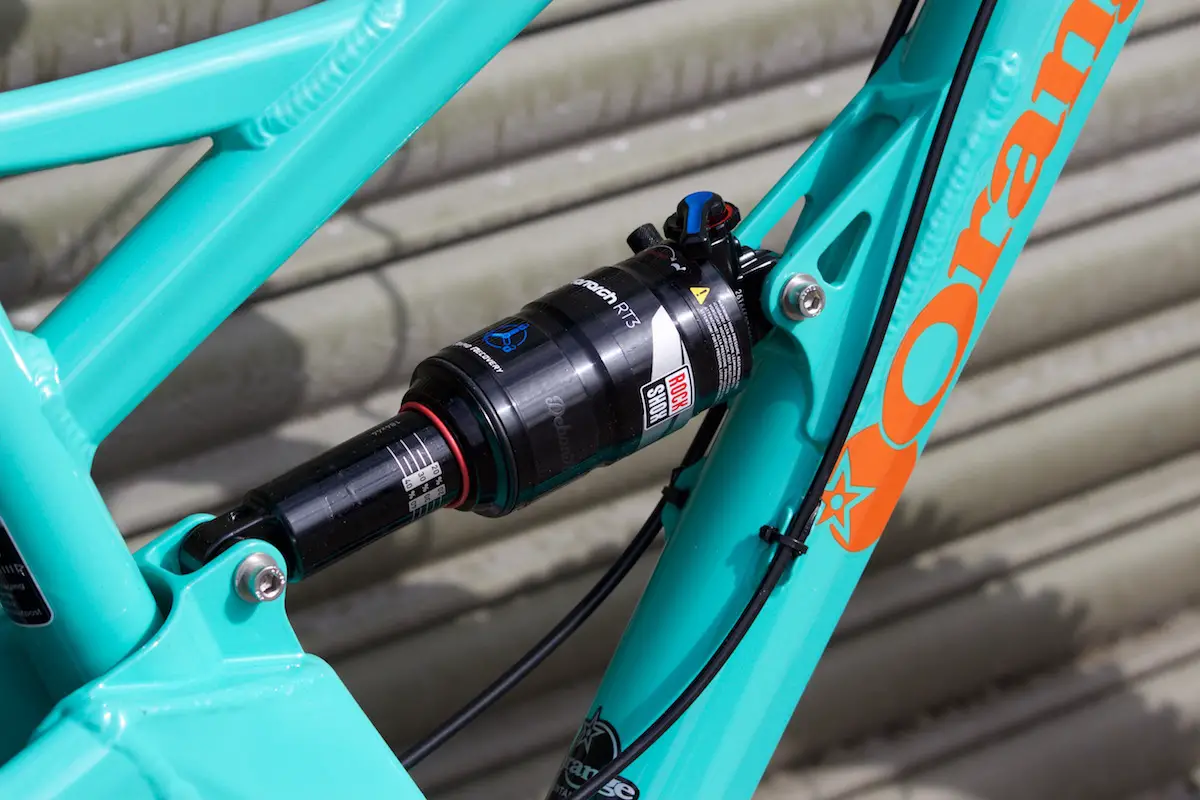
Keeping control of rear boing is a RockShox Monarch RT3 rear shock, complete with a DebonAir can to keep the travel smooth and supple. The shock comes from the factory with no volume spacers inside, so there’s plenty of scope for tuning with Bottomless Rings to alter shock rate and feel.

Like all of Orange’s new full suspension frames, the Four is 1x only, so there’s no way you can bolt a front mech onto this badboy. Lucky then that it comes with a SRAM 1×11 drivetrain, complete with lovely carbon X1 cranks that are shielded by rubber boots on the end of each arm.
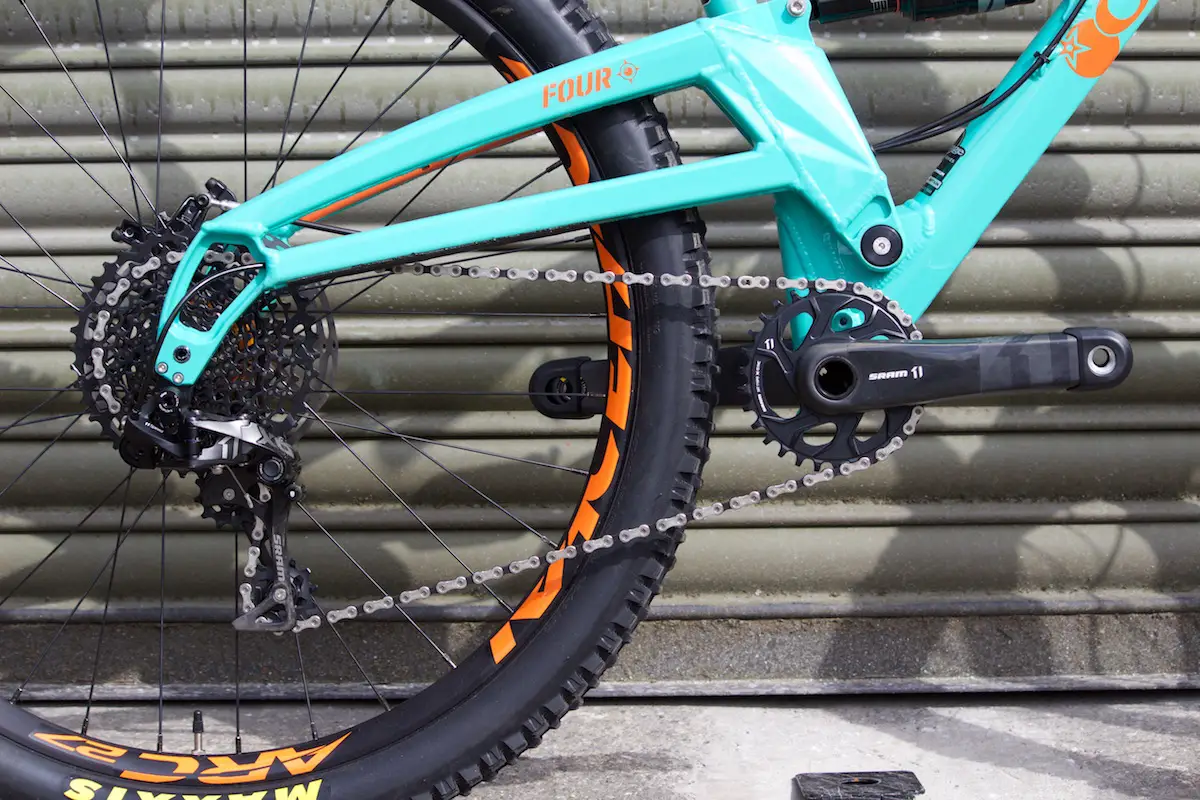
While it’s not as bling as XX1, the combination of carbon cranks along with GX shifting components should make for a pretty bulletproof drivetrain, with plenty of range from the 10-42t cassette out back.
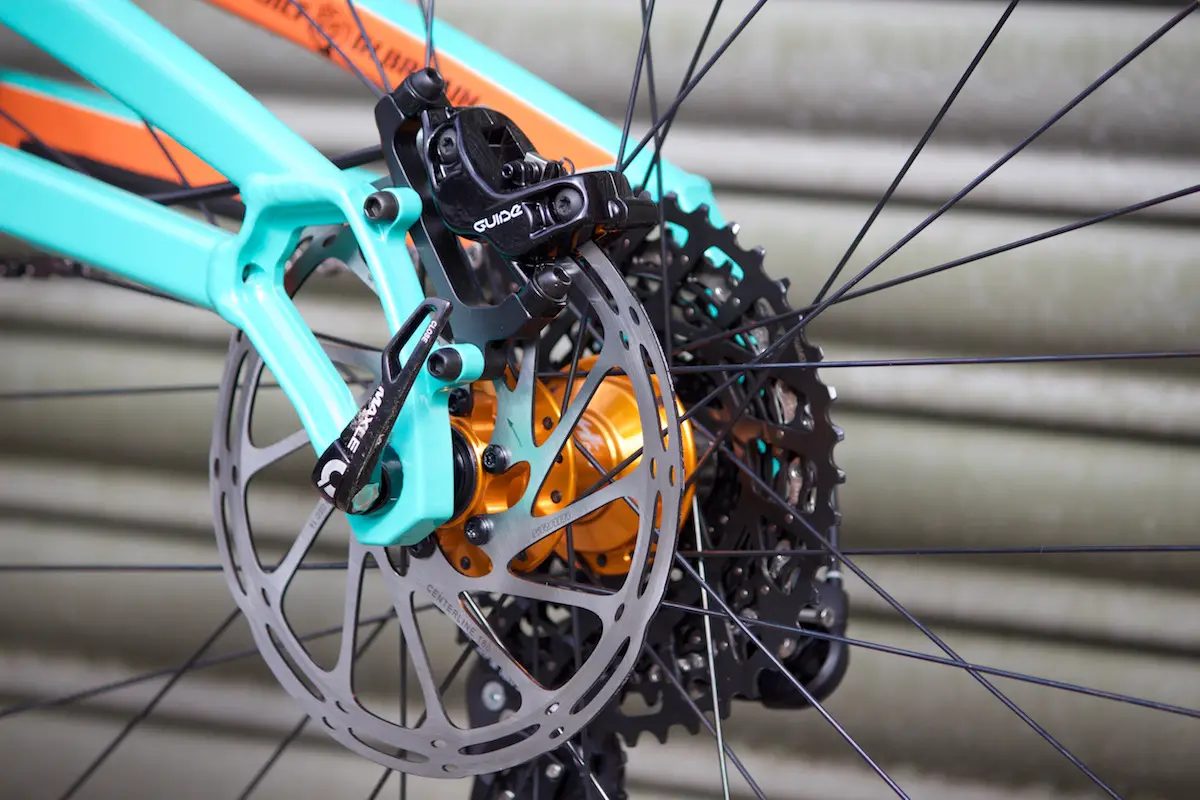
SRAM also delivers braking components for the Four RS build, with Guide R callipers wrestling 180mm Centreline rotors both front and rear.

One nice detail that you’ll appreciate on the new Four is the two-tone paint job that’s used on the inside of the swingarm. Look at the bike dead on the side, and you won’t see it. Move to a different angle, and that Atomic Orange paint pops outta nowhere!
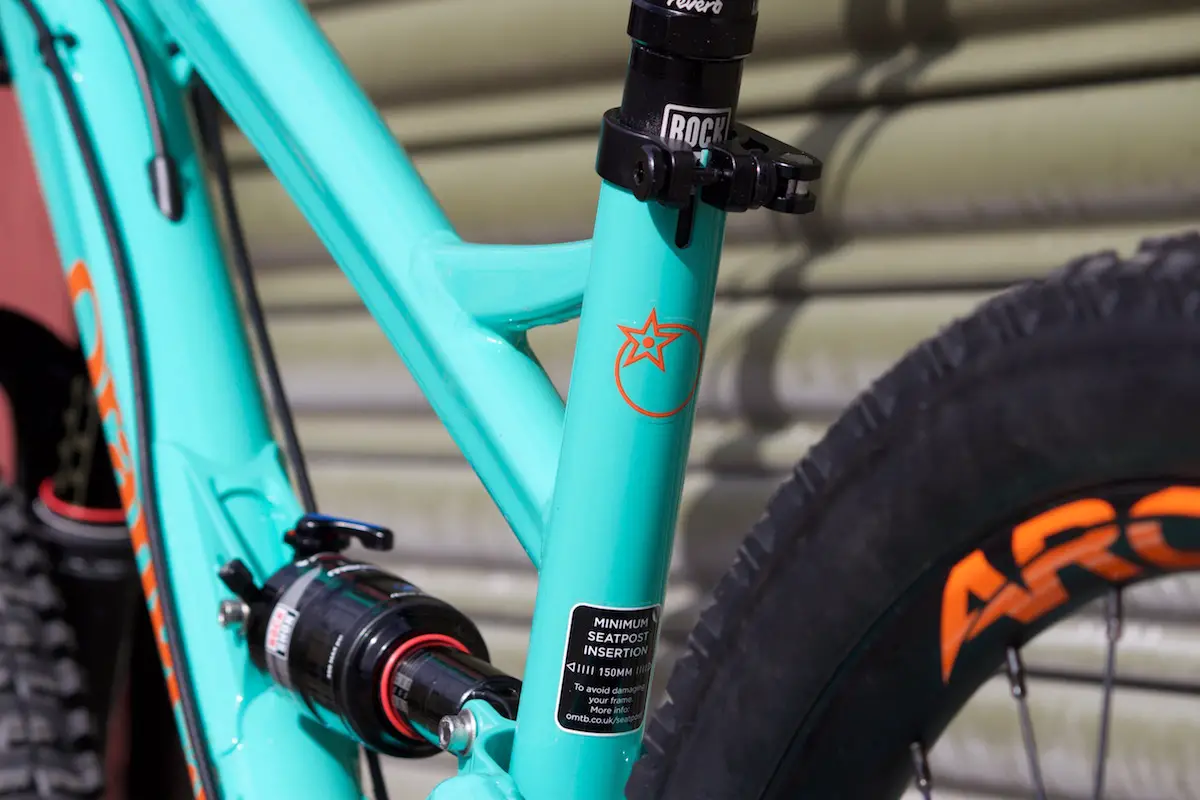
The Four has been built with shorter seat tube lengths across the size range, in order to keep it flexible for use with dropper seatposts. Orange gives you the choice of 125mm, 150mm and 170mm travel RockShox Reverb dropper posts.
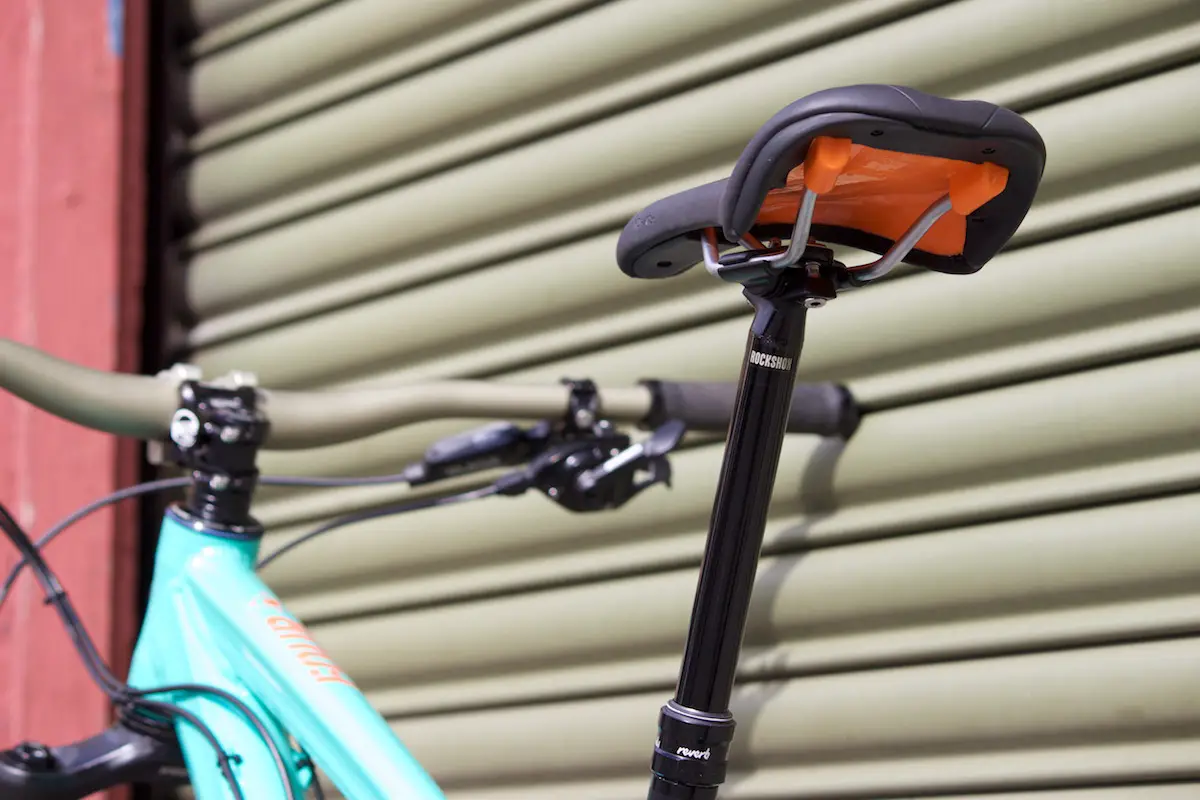
Our test bike has got a 150mm travel Reverb dropper on it, along with a neat SDG saddle that’s colour matched to the frame.

Twin bolt saddle clamp offers a secure lock on the saddle rails, as well as plenty of scope for dialling in saddle tilt.

Moving to the front of the cockpit, and you’ll find a SRAM GX trigger shifter on the right, which shares a Match Maker X clamp for the Guide R brake lever.
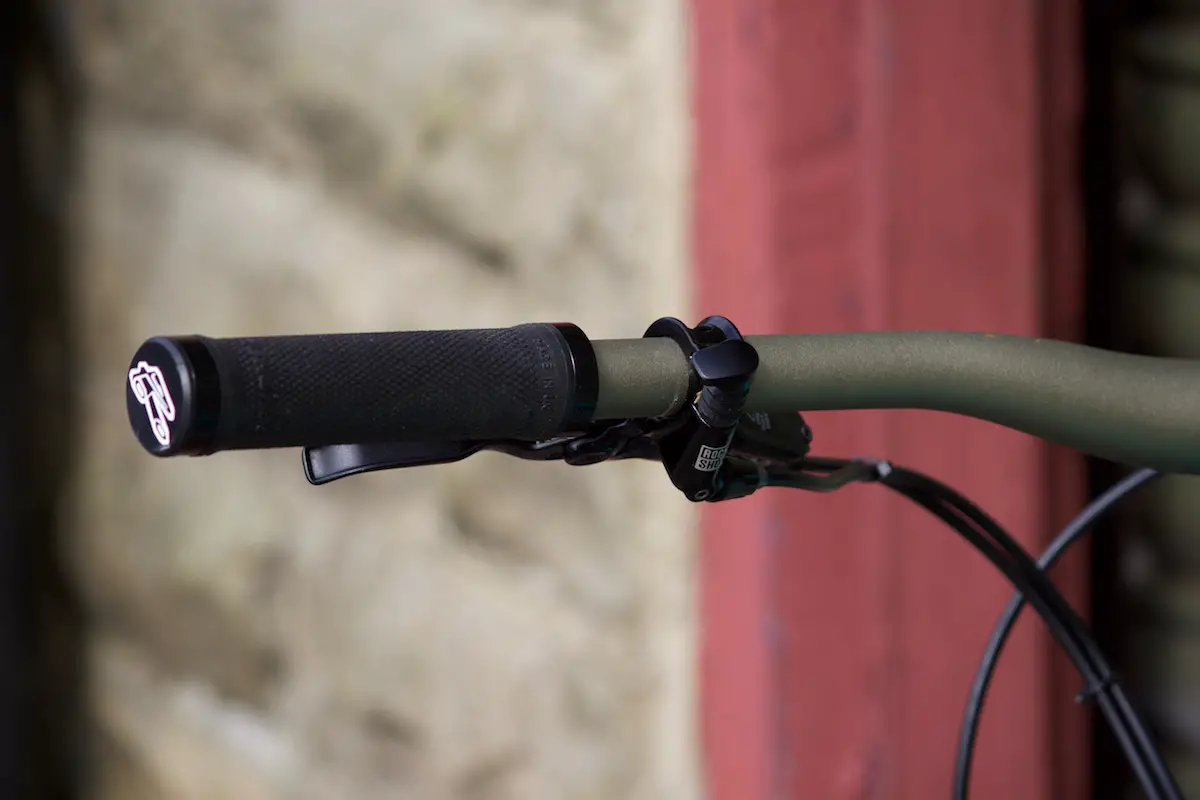
On the left is the Reverb remote (a right-hand remote that’s flipped upside down), which also makes use of a single clamp with the Guide R brake lever. Grips come from Renthal in the form of Super Tacky lock-on models (super tacky as in really soft and sticky, not tacky like a tabloid magazine).
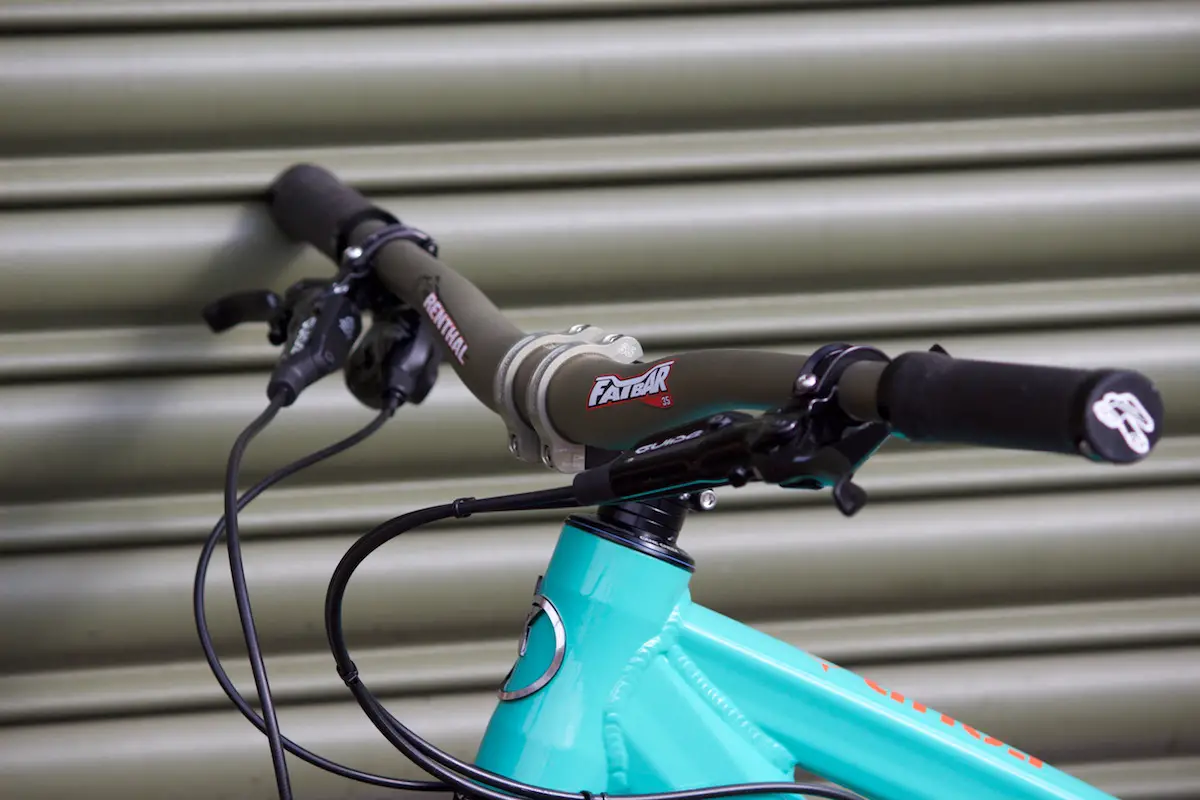
Despite only being a 120mm travel trail bike, Orange has ensured the Four is built with just as capable components as its longer travel friends. To that end you’ll find an 800mm wide Renthal Fatbar for a’steerin, and a matching Apex stem in the 35mm clamp diameter to keep things stiff and chunky like the rest of the frame.
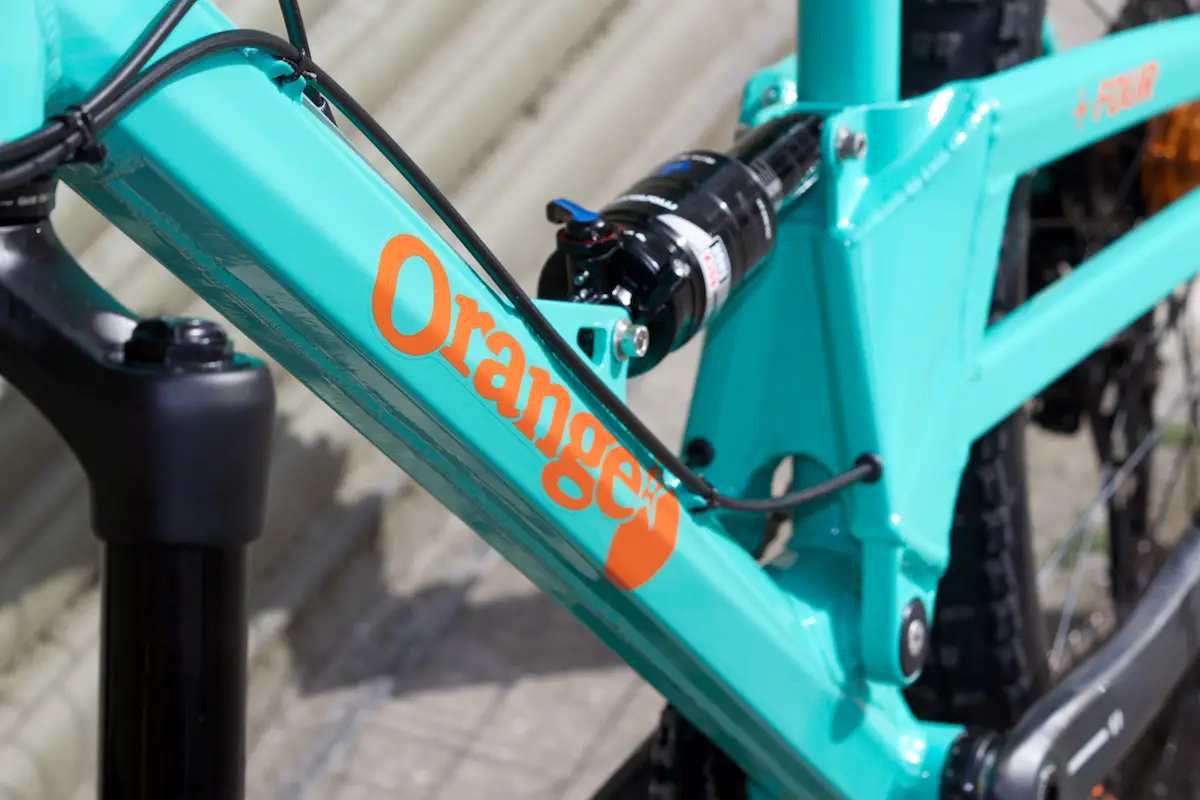
Although the Four frame looks beefy, there’s actually been a load of weight saving manoeuvres in order to keep the total grammage down. The overall frame makes use of a lighter gauge alloy than some of Orange’s longer travel rigs, and careful attention to areas like the shock mount, swingarm and dropouts has ensured weight has been removed where it isn’t required.
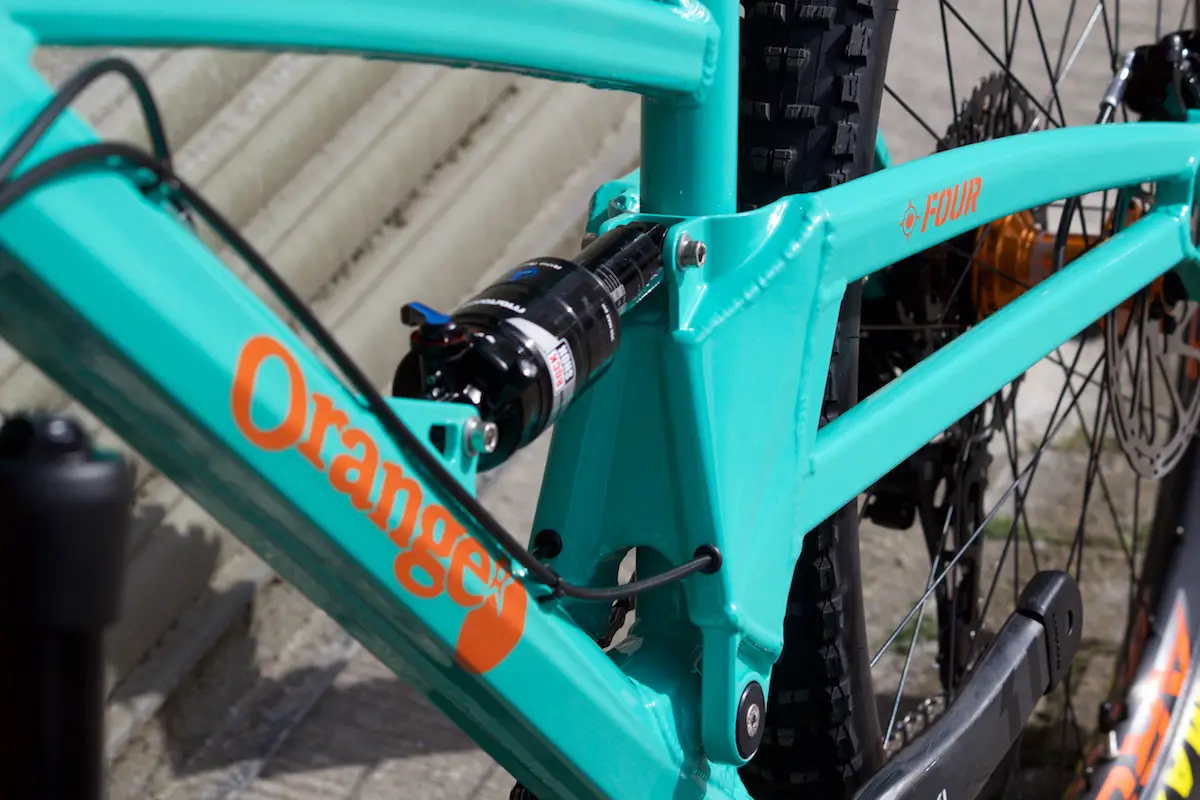
The Four runs a combination of internal and external cable routing, with the dropper post line being the only one that runs stealth all the way. Rubber entry ports on the swingarm receive the hydraulic brake hose and the rear mech cabling, before spitting them back out near the rear axle.

A trusty threaded bottom bracket shell features on the Four frame, because…welll…could you imagine Orange build a mountain bike with a press-fit bottom bracket? For Britisih riding conditions? Nope, this bike is all about all-weather sensibility and long term durability.
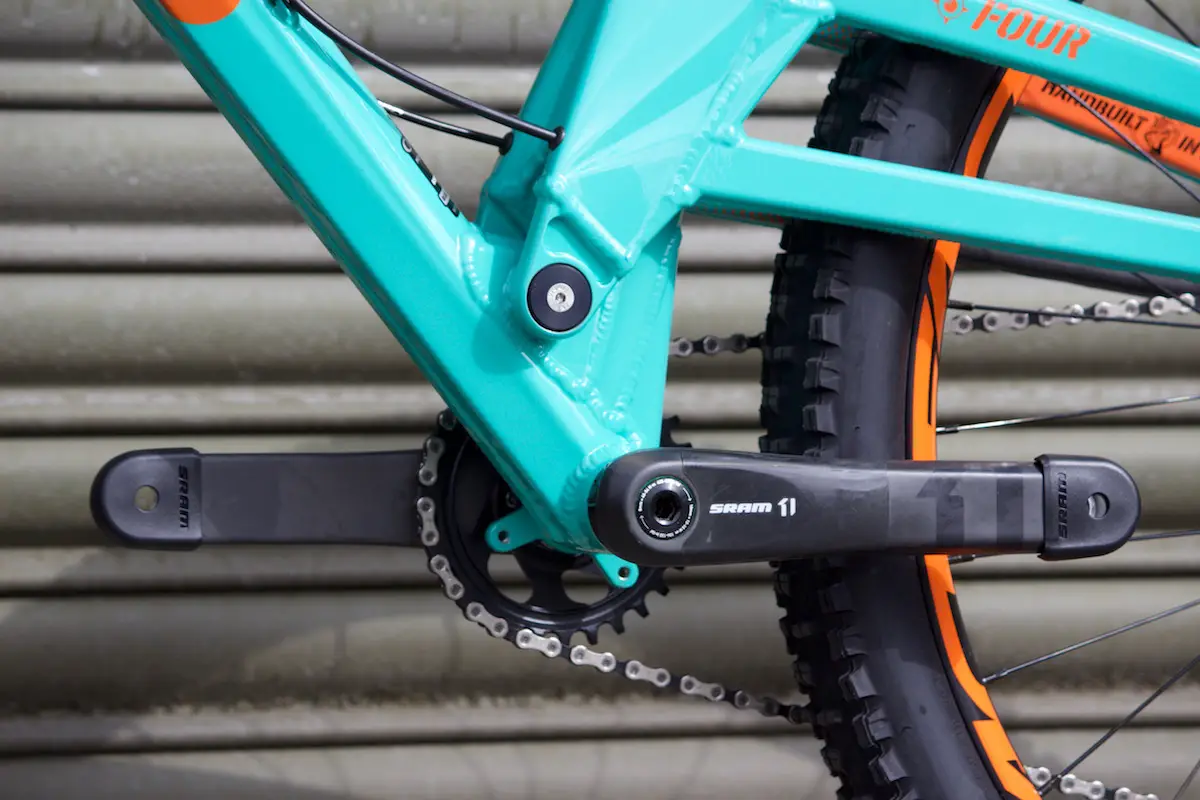
Speaking of all-weather sensibility, you’ll see that the Four offers a crazy amount of mud clearance thanks to the single pivot swingarm and elevated chainstays. There’s room for up to 2.5in rubber in the back end of the Four too, so you can get away with some pretty chunky rubber should you want to go big.

Unlike the Five, the Four runs split stays for its swingarm, which we really like from an aesthetic standpoint. There were structural and weight reasons why Orange went the split-stay route as it has done with the Alpine 6 and Stage 6, and a lot of it has to do with shock location and such.
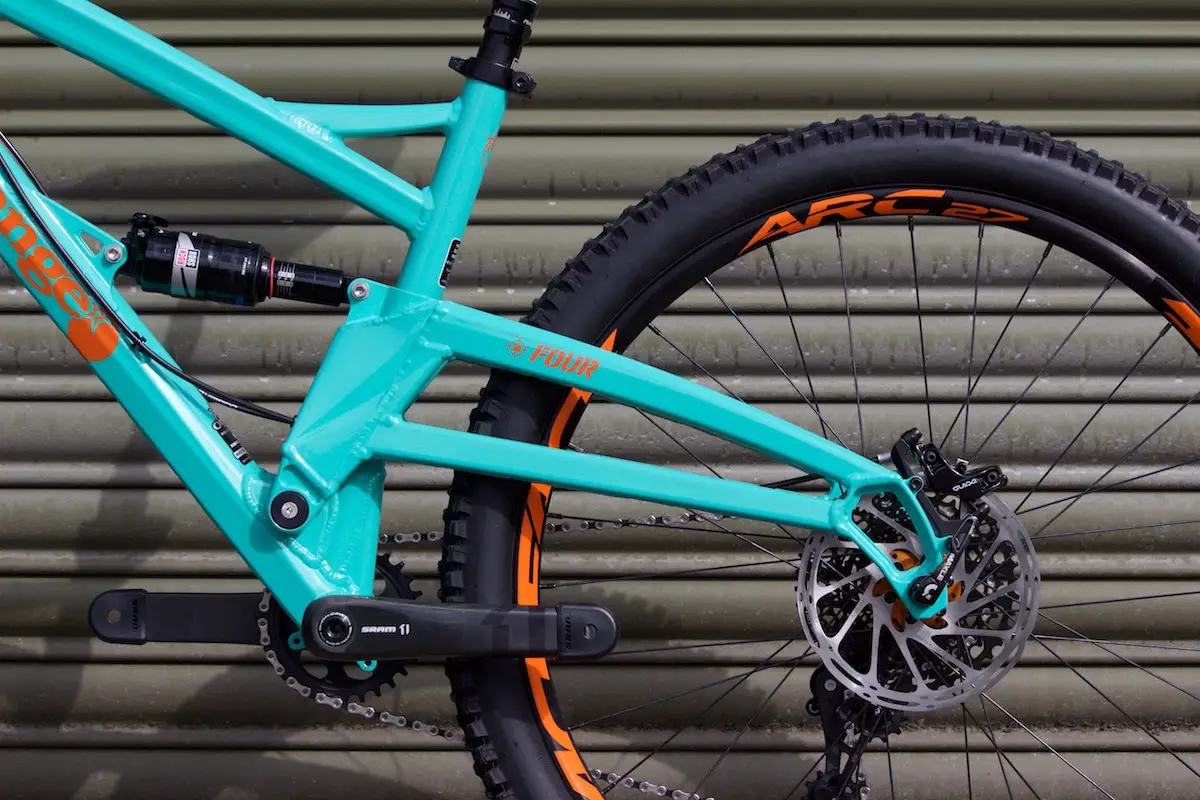
Simple, but effective. The whole rear suspension system revolves around two cartridge bearings and a single axle. No clever multi-linkages, no eccentric pivots, and certainly no carbon flex stays.
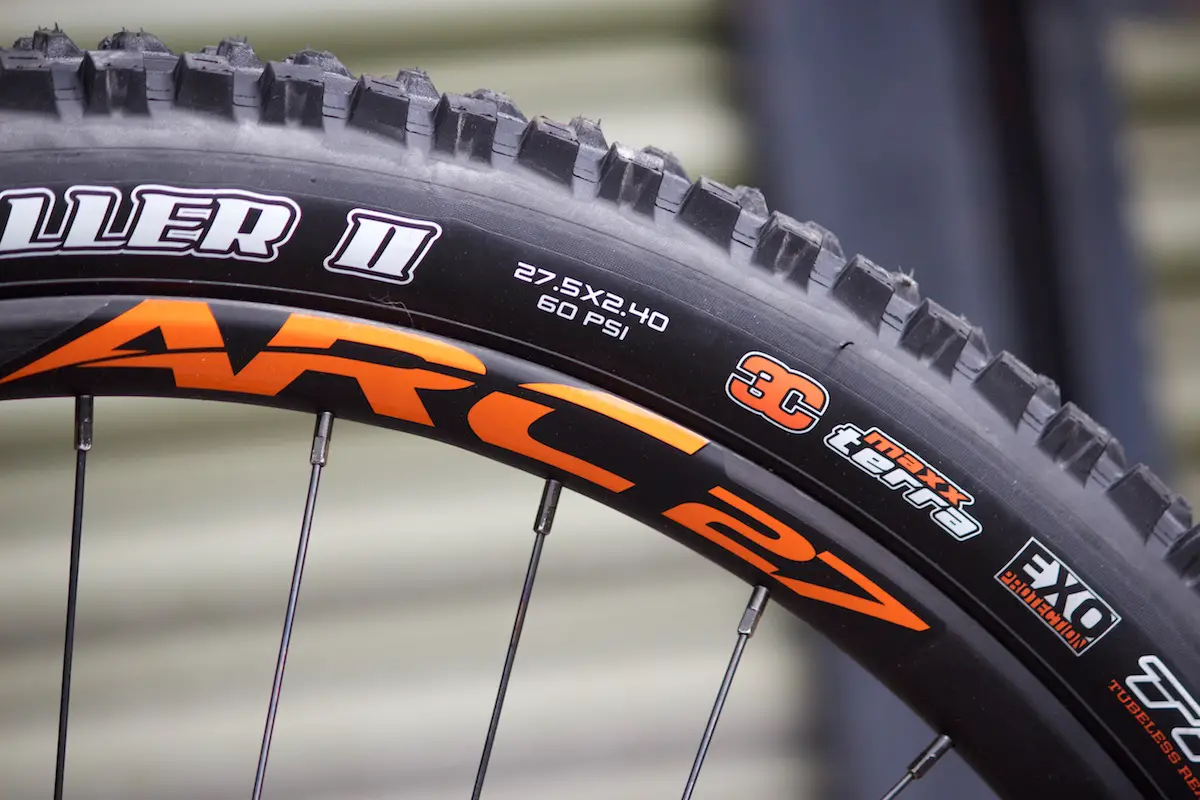
Keepin it all rolling is a pair of Maxxis High Roller shoes in a 2.4in width. The HRII’s are equipped with a triple rubber compound and EXO reinforced sidewalls, and they come from Orange setup tubeless with the Race Face ARC 27 rims.
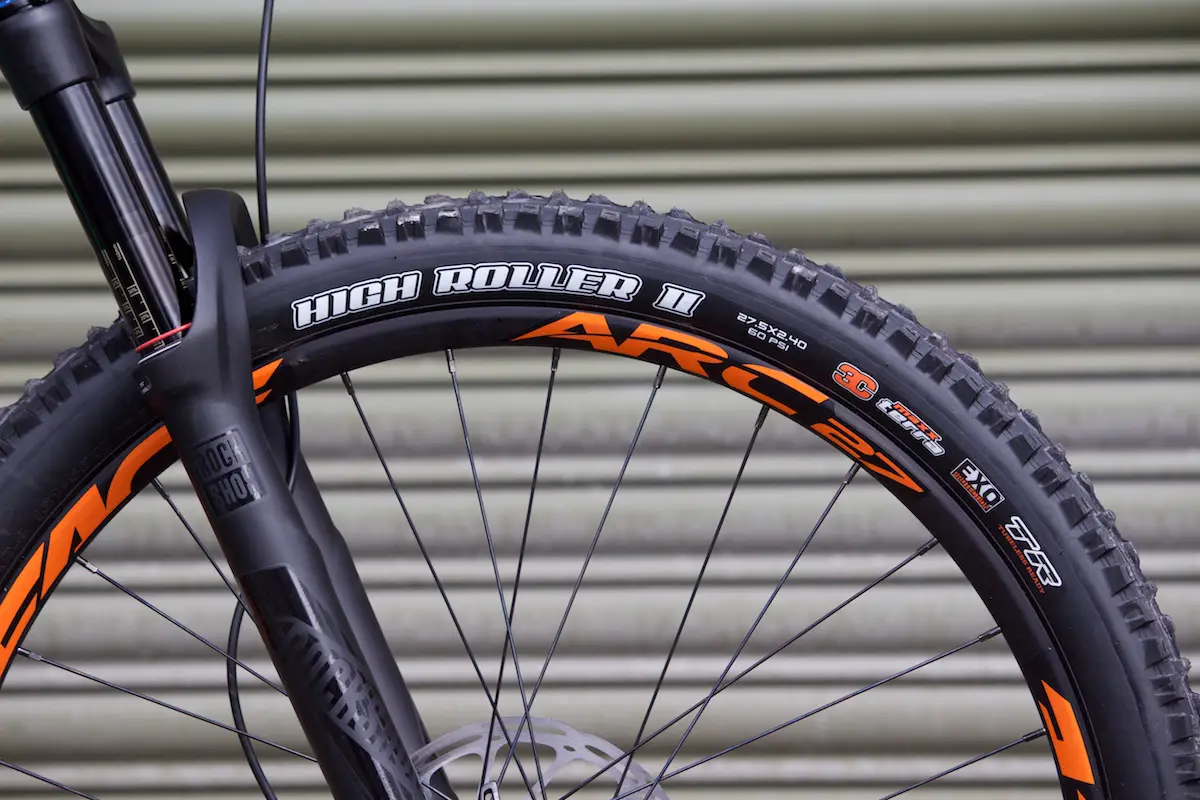
Using a 27mm internal rim width, the Race Face ARC 27 rims are tubeless compatible with the addition of tape and valves, and are drilled for 32h lacing.
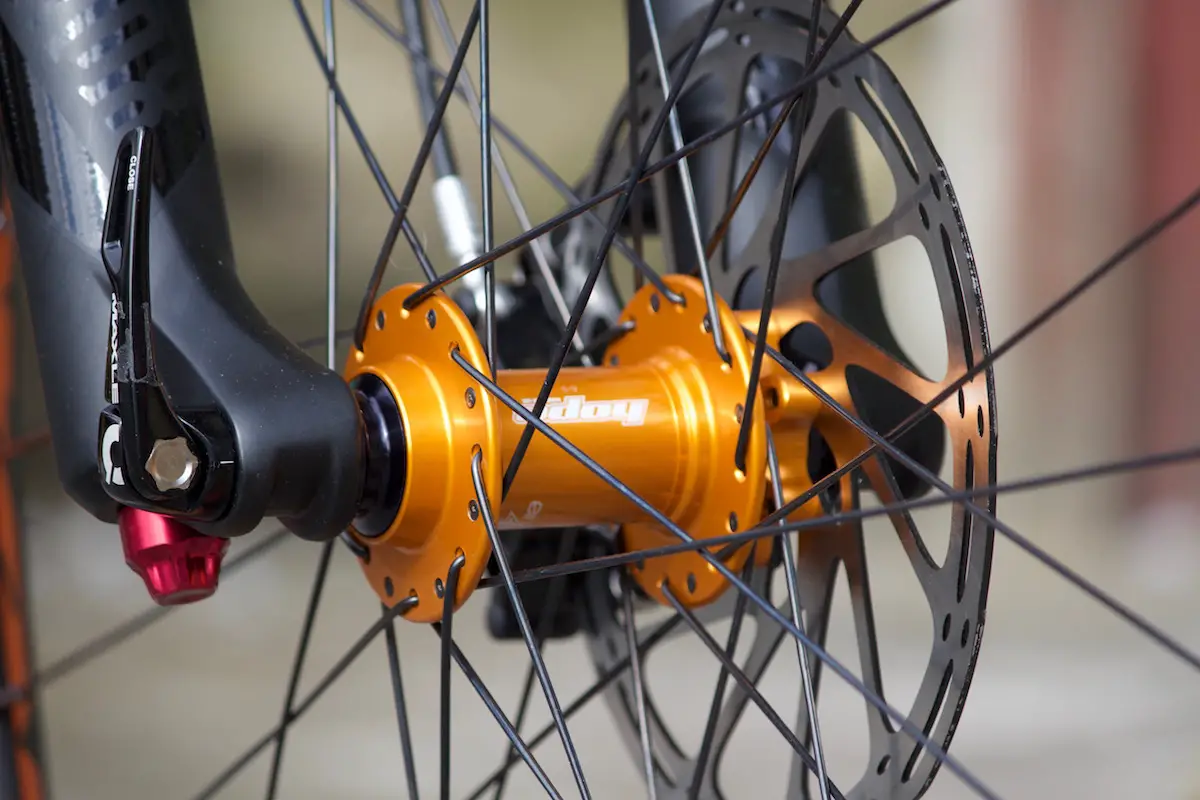
And of course, what other hubs could you possibly use on an Orange other than those from Hope? Colour matched with the orange rim decals and frame paint job, the Pro4 hubs are beautifully anodized and packed with tightly-sealed bearings and swappable end caps.
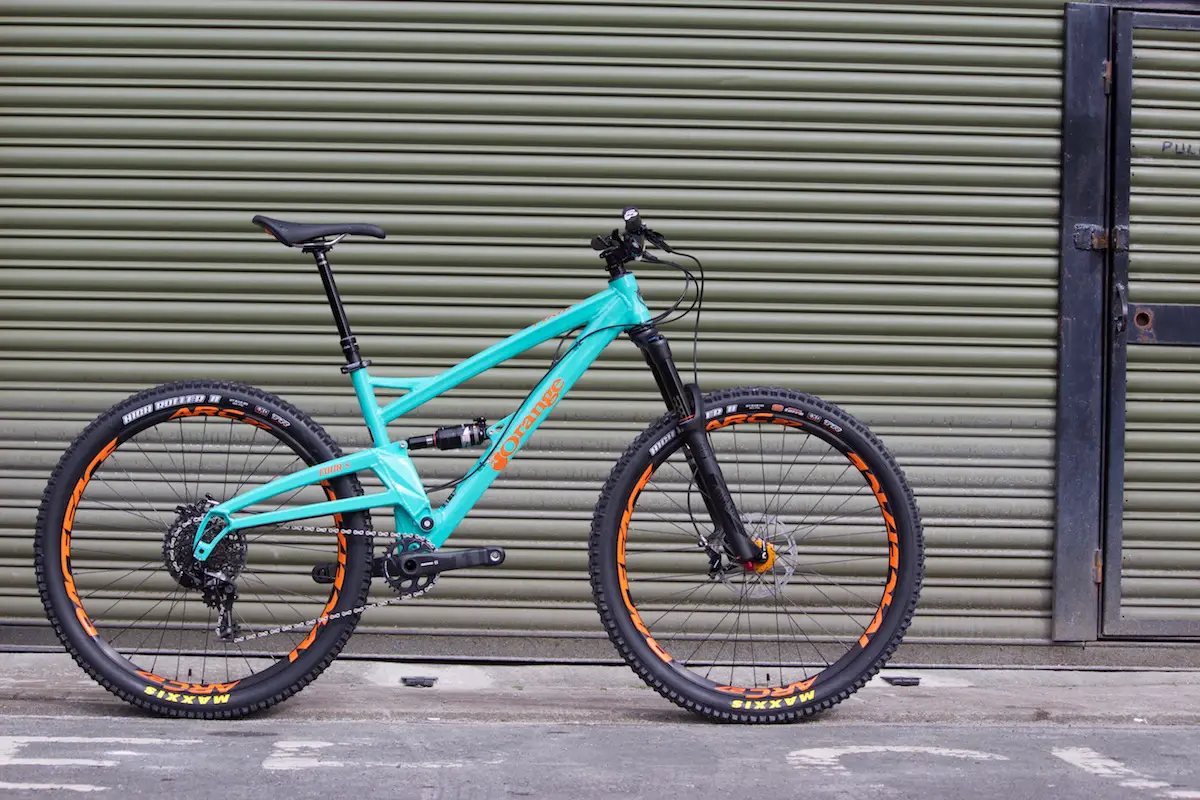
If you’re looking for more information on the Orange Four and the rest of the Orange Bikes lineup, head to the Orange Bikes website. Otherwise stay tuned for our upcoming review on the Four RS. That is, if we can bring ourselves to get it dirty!
2017 Orange Four RS Specifications
- Frame // 6061-T6 Monocoque, 120mm Travel
- Fork // RockShox Pike RCT3, 130mm Travel
- Shock // RockShox Monarch RT3 Debonair
- Hubs // Hope Pro 4, 110x15mm Front & 148x12mm Rear
- Rims // Race Face ARC 27, 32h
- Tyres // Maxxis Minion DHF EXO 3C MaxxTerra 2.3in Front & High Roller II EXO 27.5 x 2.3in Rear
- Chainset // SRAM X1 Carbon, 30t X-Sync Chainring
- Front Mech // N/A
- Rear Mech // SRAM X0-1, 11-Speed
- Shifters // SRAM GX, 11-Speed
- Cassette // SRAM PG-1150, 10-42t, 11-Speed
- Brakes // SRAM Guide R, 180mm Front & Rear
- Stem // Renthal Apex 35, 50mm Long
- Bars // Renthal Fatbar 35, 800mm Wide, 20mm Rise
- Grips // Renthal Lock-On Ultra Tacky
- Seatpost // RockShox Reverb Stealth, 30.9mm, 150mm Travel
- Saddle // SDG Strange Bel Air 2.0
- Size Tested // Medium
- Sizes available // Medium, Large, X-Large
- Weight // 13.38kg (29.52lbs)





